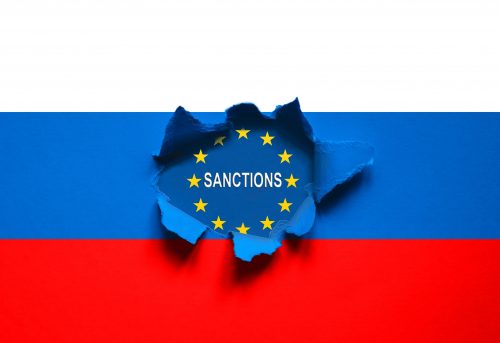 The 12th package of restrictive measures against Russia (“Package”) was adopted by the Council of the European Union on December 18, 2023. In the aggregate, the new European restrictive measures are expected to impact approximately 4.5 billion euros of annual Russian export revenues in the EU. Switzerland has joined the partner countries applying restrictive measures on iron and steel.
The 12th package of restrictive measures against Russia (“Package”) was adopted by the Council of the European Union on December 18, 2023. In the aggregate, the new European restrictive measures are expected to impact approximately 4.5 billion euros of annual Russian export revenues in the EU. Switzerland has joined the partner countries applying restrictive measures on iron and steel.
Below is an overview of the trade sanctions:
Additional oil price cap measures
With the new Package, the EU enacted additional measures designed to block Russia from using what are known as “shadow fleets” to circumvent the oil price cap. Specifically, the Package introduced monitoring obligations regarding sales of oil tankers to third-party countries in order to prevent them from being used to transport oil above the maximum limit. All tanker sales by EU companies will have to be reported to national authorities, and sales to Russian entities (and sales of tankers intended to be used in Russia) will be subject to authorization. Member States are required to share this information with other Member States and with the Commission.
Additionally, the Package introduced an obligation[1] to share detailed price information on ancillary costs of oil (e.g., insurance and transportation costs) at the request of authorities. Information on the entire Russian oil supply chain will be shared so that compliance with the price cap can be confirmed.
New import/export bans
In the new Package, the European Union provided new import and export bans to undermine Russia’s ability to wage war. On the import side, the EU has extended the import ban to cover certain types of liquefied petroleum gases (LPG) that account for more than 6% of the EU’s total LPG intake from Russia in 2023.[2] There are also new sanctions on Russian diamonds as part of a G7-coordinated action. As of March 1, 2024, the import ban will cover Russian diamonds polished in third-party countries with a weight of 1 carat or more. Simultaneously, the EU will introduce a system for tracing Russian diamonds that incorporates an identification mechanism and certificates of origin.[3] On September 1, 2024, the import ban will be expanded to cover Russian lab-grown diamonds and jewelry and watches incorporating diamonds weighing 0.5 carat or more. Finally, the new Package also includes a ban on imports of raw materials for steel production and some processed aluminum and copper products.[4]
On the export side, restrictive measures apply to advanced and dual-use technologies and to certain chemicals, thermostats, DC motors and servomotors for unmanned aerial vehicles (UAVs), machine tools, and machine parts. Export restrictions on advanced and dual-use technologies cover 29 entities associated with the Russian military-industrial complex supporting the war in Ukraine. In addition, the new measures allow banning the provision of business management and industrial design and manufacture software, subject to the applicable exemptions and waivers that regard the Russian government and Russian companies. This is being enacted with an eye to further hampering Russia’s industrial capabilities.
Anti-circumvention measures
Finally, the anti-circumvention measures are among the most important in the Package. They instate a ban on allowing certain economically critical goods to transit through Russia before being exported to third-party countries. The measures are designed to keep goods from being diverted to Russia in transit. For that purpose, the Package requires companies to prohibit contractually the re-export of certain types of critical goods to Russia.
On January 3, the Council added the Russian diamond firm PJSC Alrosa and its CEO to the EU sanctions list, in keeping with the diamond ban contained in the 12th sanctions package introduced on December 18, 2023.
Finally, on January 29, the Council renewed the restrictive measures introduced in 2014 for another six months—to July 31, 2024—in view of the Russian Federation’s ongoing destabilizing actions in Ukraine.
[1] After a transitional period.
[2] This import ban will enter into force after a transitional period of 12 months.
[3] During this period, businesses will have the option to use the certification and traceability mechanism or other evidence to prove non-Russian origin.
[4] Measures regarding some steel goods, such as raw materials, will be implemented after a 12-month transitional period for the execution of existing contracts, or after a 2-year period when a certain amount of imports will still be allowed. This is intended to give EU companies time to find alternative sources of supply.


